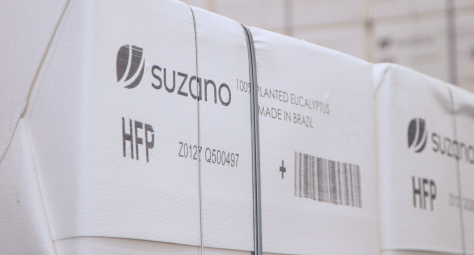sobre o que você deseja falar?


perguntas, sugestões ou problemas técnicos envolvendo a plataforma

informações sobre a empresa


Suzano believes that ecological restoration is a commitment and responsibility of the company in the regions where it operates. To meet the legal requirements, certification requirements, and voluntary commitments, the company has been carrying out the Ecological Restoration Program since 2010, which covers the Amazon, Cerrado, and Atlantic Forest biomes, working in all of its forestry business units.
Many exemplary projects have been implemented to restore degraded areas in Brazil. In the case of Suzano, one of the country's largest pulp and paper companies, we have invested in projects to replant and restore our degraded areas. The company's Ecological Restoration Program seeks to significantly increase connectivity between existing forest fragments, promote the formation of ecologically representative conservation area networks in all the territories where it is implemented, and guarantee legal compliance with rural properties included in its production process.
In 2020, Suzano's Ecological Restoration Program was recognized by the UN as one of Brazil's 15 most transformative projects in terms of economic, social and environmental sustainability. The case presented was also selected as one of the six highlights among more than 5,000 entries. Experts in sustainable development made the selection from the UN-linked Economic Commission for Latin America and the Caribbean (ECLAC), the Institute for Applied Economic Research (Ipea, for its Portuguese acronym) and the federal government. The group evaluated 131 studies, of which 66 cases were chosen to make up the "Big Push for Sustainability" repository. Suzano's program was also recognized as a good practice in line with the UN's Sustainable Development Goals (SDGs) and was included in the publication Inspiring Examples to Drive Change.
The program promotes ecosystem services, such as water supply and purification, biological control of pests and diseases, local and regional climate regulation, air quality improvement, carbon sequestration and storage, and pollination. For more details, see the indicator “Optimizing opportunities for ecosystem services provided by forest areas“.
Suzano's Ecological Restoration Management Manual defines the general guidelines and procedures for the Ecological Restoration Program, which are described as planning, diagnosis, implementation, maintenance, and monitoring.
The restoration planning of areas is defined based on legal deadlines for license conditions, Environmental Restoration Commitment Terms (TCRA), and Degraded Area Restoration Plans (PRAD), as well as the logistics of operations and/or proximity to farms.
In the diagnostic stage, each area's environmental and land use situation is characterized. This can be done in the field and/or through remote sensing techniques, using drones, satellite images, and Lidar (Light Detection and Ranging), among other technologies. Based on the results, the areas' resilience potential is assessed to support the choice of the appropriate implementation method for each area.
In the implementation phase, the activities take place for an area to be considered "in the process of restoration". The method to be applied is determined in the diagnostic phase and is defined based on the area's level of degradation, its capacity for self-regeneration, and the identification and management of its degradation factors.
In order to carry out the restoration processes efficiently and consistently, Suzano continually seeks technical recommendations that will guarantee the successful recovery of our areas. Based on these recommendations, we constantly revise our technical management lists. The restoration methodology adopted varies according to the area's level of degradation and its capacity for self-regeneration (resilience potential).
The methodologies that can be used are:
The maintenance phase includes a set of cultural treatments to ensure the survival of regenerating plants or those derived from seeds or seedlings. In this phase, activities such as planting fertilizer, chemical weeding and mowing can occur. The activities to be carried out are defined during the monitoring phase.
To correct the ecological trajectory of the area after detecting an unsatisfactory indicator and improve the techniques and methodologies used, Suzano has a monitoring plan for restoration areas structured in two types: operational (or silvicultural) monitoring and ecological monitoring.
Operational monitoring aims to ensure the quality standards of the operations carried out. It includes measures of native seedling quality, planting survival, weed and ant monitoring, and the operational quality of implementation (soil preparation, planting, and herbicide application results).
Ecological monitoring, on the other hand, aims to assess the ecological attributes of areas undergoing restoration to see if there is a need to carry out adaptive management activities (densification planting, enrichment, and others) to correct the local ecological trajectory, as well as to indicate the extent to which they can be considered "restored". The areas of the sample blocks where the reference values for restoration defined in state legislation or in the company's standard are reached will be considered restored, which may also consider landscape indicators in addition to the previously described parameters.
Suzano's Ecological Restoration Program has thus contributed to increasing the coverage of native vegetation in Brazil, reducing environmental impacts, and improving the adaptive capacity of these environments to climate change.
The following data is available in the tables below:
| 2020 | 2021 | 2022 | 2023 | 2024 | |
|---|---|---|---|---|---|
|
Espírito Santo/Bahia |
204,40 |
221,56 |
238,40 |
254,86 |
278,75 |
|
Maranhão² |
1,23 |
1,23 |
1,84 |
2,88 |
10,57 |
|
Mato Grosso do Sul |
6,38 |
6,38 |
9,27 |
9,98 |
12,62 |
|
São Paulo |
118,16 |
121,72 |
124,04 |
128,80 |
146,39 |
|
Total amount |
330,17 |
350,89 |
373,55 |
396,51 |
448,32 |
| 2020 | 2021 | 2022 | 2023 | 2024 | |
|---|---|---|---|---|---|
| número total | número total | número total | número total | número total | |
|
Espírito Santo/Bahia |
9.980.217 |
10.762.147 |
11.646.054 |
12.864.926 |
14.244.037 |
|
Maranhão |
15.200 |
15.200 |
15.700 |
17.200 |
19.200 |
|
Mato Grosso do Sul |
49.800 |
49.800 |
50.897 |
56.444 |
88.544 |
|
São Paulo |
390.000 |
390.000 |
390.000 |
390.000 |
395.900 |
|
Total amount |
10.435.217 |
11.217.147 |
12.102.651 |
13.328.570 |
14.747.681 |
| 2020 | 2021 | 2022 | 2023 | 2024 | |
|---|---|---|---|---|---|
|
Espírito Santo/Bahia |
2,10 |
17,16 |
16,85 |
16,45 |
23,89 |
|
Maranhão |
0,00 |
0,00 |
0,61 |
1,04 |
7,69 |
|
Mato Grosso do Sul |
0,00 |
0,00 |
2,89 |
0,71 |
2,64 |
|
São Paulo |
2,88 |
3,56 |
2,32 |
4,76 |
17,59 |
|
Total amount |
4,99 |
20,72 |
22,67 |
22,95 |
51,81 |